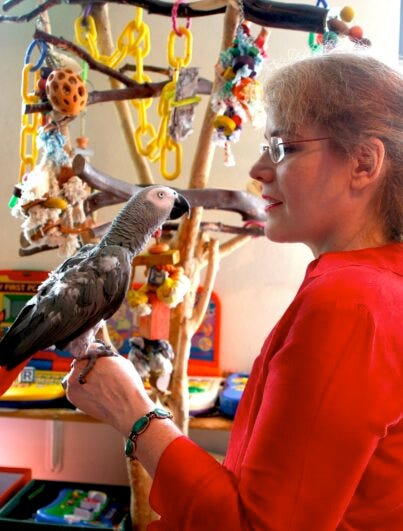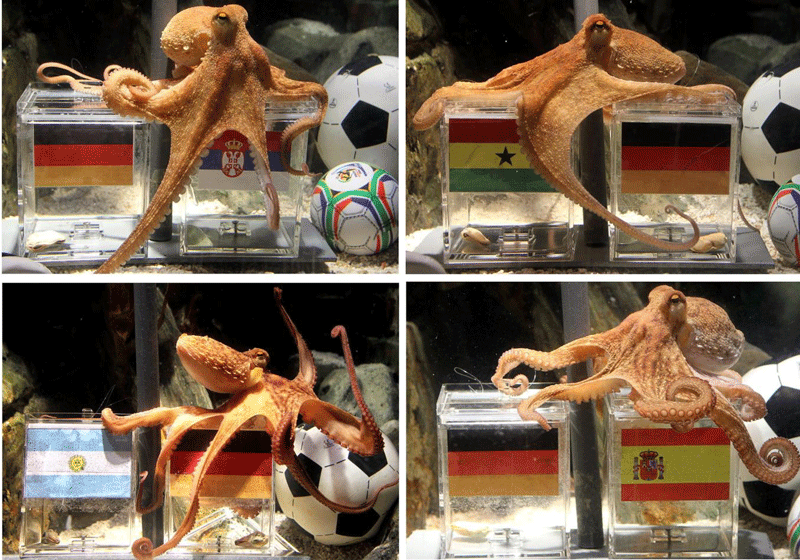Psychic ability, or “psi” as parapsychologists call it, was framed as either “miraculous” or “diabolical” by many major religious institutions of the pre-modern world. Even today, a majority of adherents to various sects of Christianity or Islam might assume that putatively “paranormal” powers such as telepathy, clairvoyance, and precognition are abilities that properly belong to either angels or demons (jinn), and that only humans who are either divinely graced – such as the saints of Catholicism or Sufi masters – or individuals who are possessed by demons, or have entered into a pact with the devil, are capable of demonstrating such “wild talents” (to use the phrase of Charles Fort). In the Western world, no less than 60,000 witches and sorcerers were put to death during the Medieval and Renaissance eras on account of this religious dogma. Moreover, these persecutions only ended when early modern scientists adopted materialism and denied the existence of psi phenomena altogether as possible subjects of empirical study. The Church relented because this concession kept psychic abilities sequestered within the domain of faith and dogma.
However, by the early twentieth century, scientific studies by zoologists and naturalists such as F.H. Herrick and Bastion Schmidt had demonstrated psychic abilities in animals that were so significant that, in many cases, human psi ability is dwarfed by them. Herrick’s cat accidentally escaped when he was trying to carry it in a bag while traveling by streetcar from his home to his university some five miles away. The fact that the cat was waiting for him at home that very night after having navigated the maze of streets in the city of Cleveland, Ohio, prompted Herrick to carry out a series of deliberate experiments where he would carry the cat in a closed container to various locations one to three miles away from his home. Once released, the cat could find its way home without difficulty from any point on the compass. Schmidt took dogs to various locations that they had never been to before in enclosed vans and by means of circuitous routes. He had trained observers posted along the dogs’ probable route home, and in the event that the dogs took some other route, he also had them followed at a distance by cyclists who were instructed not to interact with them in any way other than to observe their behavior. When the dogs were released, each spent up to a half hour running back and forth in a relatively circumscribed area, apparently in order to get its bearings. Eventually, the dog would repeatedly stare intently in the direction of its home, before finally setting off in this direction at quite a rapid pace and without further hesitation. The dogs would successfully make their route home by whatever path that would allow them to avoid traffic, farmhouses, strange villages, and other places where they might run into trouble.
More recent studies of the kind discussed extensively in a book by the British biologist Rupert Sheldrake, aptly titled Dogs That Know When Their Owners Are Coming Home: And Other Unexplained Powers of Animals (1999, revised 2011), have discovered that dogs anticipate their owners’ return, often waiting at the door or window at the precise moment that their owners decide to come home – no matter how far away from home the owners happen to be. In one study, a dog named Jaytee consistently demonstrated this ability, even when his owner, Pam Smart, returned at irregular and unpredictable times. Video recordings confirmed that Jaytee’s behavior was not prompted by external cues but correlated directly with Pam’s intention to return.
This is one of many examples that underscore the role of relational bonds in facilitating psi. Another involves studies of the telepathic attunement between horses and their riders. Riders often report that their mounts respond to thoughts or intentions before any physical cues are given. This sensitivity is not limited to familiar humans; horses have been known to detect changes in their environment or anticipate threats in ways that suggest they possess precognition. Dogs and horses are among the most familiar animals, with a long history of being closely bonded to humans. But psi has also been discovered in flocks of birds, schools of fish, and even termite colonies.
Flocks of Birds and Schools of Fish
Films of large flocks of dunlin birds, when slowed down, show that the organic banking movements of the flock are initiated either by a single individual or by a few birds together at some point within the flock. The wave of movement radiates outward from this point to the rest of the flock, taking only 15 milliseconds (thousandths of a second) to pass from one bird to its neighbor. Yet when dunlins are tested in a laboratory, it is found that they are incapable of even the most primitive reaction to sensory stimuli (such as a flash of light) at any rate faster than 38 milliseconds. Thus, it seems it would be impossible for any given dunlin, by known sensory means, to gauge a vast pattern of movement and coordinate its own bodily motion accordingly in less than half that time.
Fish also exhibit similar, apparently telepathic, abilities to coordinate their rapid movements in schools. In one laboratory experiment, members of a school of fish were temporarily blinded by having their eyes fitted with opaque lenses. The researchers also cut key junctures of the nerves of the pressure-sensitive organs that run along the length of their bodies, known as “lateral lines.” This means that these fish were left with no known physical sensory organs by which to effectively communicate with each other. Nevertheless, they were still able to precisely coordinate their movements with those in the rest of the school. These include predator evasion movements where all of the members of the school dart away from each other simultaneously. In so doing, none of the fish collided with each other – this despite the fact that the explosive expansion around a predator occurs at a speed of ten to twenty body lengths per second. Even in the case of fish that have not had their sight artificially impaired, and their lateral nerves cut, this is apparently too fast for nerve impulses to move from their eyes to their brains and then from their brains to their muscles.
Termites have brains smaller than a pinhead, and yet their collective capacity for structural engineering and repair demonstrates phenomenal psychic ability – both telepathy and clairvoyance. Social insects in general behave as if they are the limbs of a single “superorganism,” engaging in vast building projects – such as 10-food high nests with galleries, chambers, and ventilation shafts. Some of these species of insects, such as termites, are blind. Their physical sensory organs of scent and sound are hardly enough to account for what was observed in the following experiment. Breaches were made in the termite mounds within a “termitarium” (an enclosure of such mounds). Then an opaque, soundproof, and scent-proof steel barrier was inserted into the termitarium in such a way as to divide the damaged areas of the mounds into two halves. Parts of any given breach fell asymmetrically on either side of the barrier. The worker termites that rapidly endeavored to repair the damage could know nothing of each other by means of their physical senses. Nevertheless, when their work was complete and the steel plate was taken away, the two repaired halves of the termite mound matched each other perfectly.
N’kisi and Morgana
N’kisi is an African Gray parrot trained by Aimée Morgana, an animal behaviorist who lives with him in her Manhattan apartment. N’kisi has demonstrated not only a remarkable vocabulary of more than 700 words, but he also appears to have a contextual understanding of their meanings. By contrast with some of the other species discussed thus far, this places N’kisi, and African Greys in general, among the most intelligent of non-human animals, together with higher primates, whales, dolphins, and, as we will come to momentarily, octopuses.
In a series of controlled experiments caried out by British biologist Rupert Sheldrake together with Morgana in her apartment, Morgana viewed images in a separate room while N’kisi’s vocalizations were recorded. N’kisi produced words or phrases matching the content of the images with a statistical significance far beyond chance. For example, when Morgana viewed an image of a person lying down, N’kisi remarked, “Someone is sleeping.” When she examined an image of a car, the parrot said, “That’s a car.” Out of 149 trials, N’kisi correctly identified the target 23 times, yielding a p-value of 0.00025 – a level of accuracy that would be considered as totally compelling evidence for the legitimacy of a phenomenon in any other scientific domain.
N’kisi can also clairvoyantly react to what is on the screen of a television that is not in his direct line of sight, and the volume of which has been muted. In one instance, the television was showing a man walking on the ledge of a building. The parrot, who could not see what was on the screen, exclaimed “don’t fall down! Don’t fall down!” On top of the apparent clairvoyance demonstrated here, N’kisi’s concern for a human ‘inside the television’ who might be in danger is rather striking indeed. African Gray parrots are highly social creatures, forming deep emotional bonds with humans. This connection appears to enhance their ability to participate in telepathic communication. Rupert Sheldrake thinks that the bonds between living beings create fields of information that transcend the boundaries of local and linear spatial and temporal orientations.
Paul, the Prophet
Octopuses are renowned for their intelligence – as evidenced by their tool use, problem-solving, and shape-shifting abilities of mimicry. They have even been known to engage in pranks. But the feats of one cephalopod named Paul cannot be explained away simply on the basis of problem-solving or clever deductions based on environmental cues. In 2010, Paul became a global sensation by accurately predicting the outcomes of eight consecutive World Cup matches. When presented with two boxes containing food, each marked with the flag of one competing team, Paul consistently chose the winner. His final prediction, correctly identifying Spain as the World Cup champion, secured this octopus his status as an oracle with psychic powers greater than any human fortuneteller or precognitive adept. Statisticians calculated the odds against chance of such a perfect prediction streak at 1 in 256.
The boxes were identical with the exception of their markings, and rigorous precautions ensured that no external signals could guide Paul’s choices. He also seemed to be more motivated by the presence of a crowd, which is somewhat unsurprising since octopuses have been known to show off and seek attention. Cephalopods such as octopuses and squids possess a decentralized nervous system, with much of their neural activity taking place in their tentacles rather than in the brain. They’ve been said to have a brain in each of their arms. This unique physiology may facilitate forms of perception that are alien to us but that augment psi functioning. Paul’s apparent precognitive ability also suggests that sentience, as an intrinsic awareness of and responsiveness to the environment, and moreover an awareness not bound by the phenomenological construct of linear-space time, provides a functional basis for psi that is independent of cognitive complexity. Of course, this could already be seen in the clairvoyant and telepathic termites discussed above.
The Psychic, Spirituality, and the Spectral
An array of empirical evidence for the psychic ability of animals deconstructs the Cartesian dichotomy between a putatively material nature and the supposedly unique spiritual capacities of human souls as distinct from our physical bodies. This Mind-Body dualism, which came to predominate in the higher intellectual sphere of the West beginning with René Descartes, who was a member of the Jesuit Order, has precedents in a Gnostic dualism of Spirit and Matter that is even older. The Greek word psyche means the “spirit” in the sense of a soul that could survive bodily death and was used with such a signification at least since the time of Heraclitus (flourished circa 500 BCE). The psychic abilities of animals, and the ubiquity of psi in the natural world, demands that we recognize the artificiality of the dichotomy between the spiritual and what we take to be physical nature. Telepathy, clairvoyance, and precognition are not “supernatural” abilities. These capacities are not even preternatural. They are found throughout nature. This is much more consistent, for example, with Buddhist understandings of a continuum between animal sentience and human intelligence, and beyond it into domains inhabited by superhuman beings, in the context of which psi is also recognized as a capacity that lies on a spectrum.
In my philosophical writings, I have employed the term spectral to designate, among other things, a phenomenological spectrum that defies the binary categories that we dogmatically impose upon phenomena that intrinsically lack such clear-cut distinctions. The psychic and the material or the spiritual and the physical, or the supernatural and the natural, are various sets of terms for one deeply entrenched artificial dichotomy that ought to give way to a recognition of psi as indicative of a spectrality that probably has an evolutionary origin and purpose. This connects it to another meaning of the word spectral, namely as “what is to come” or is in the process of becoming.
This sense of the specter as what has to do with “the future” will be a subject of inquiry and exploration in future articles. So also, will be the questions that the psychic ability of animals raises in terms of the relationship between sentience and psi, on the one hand, and sentience and intelligence, on the other, and consequently also the question of how psi functioning relates to various forms of intelligence. It is a timely question, and even an urgent one, because if it were to turn out that Artificial Intelligence is also capable of demonstrating the same kind of psi abilities as termites and octopuses, but on a scale correlated to the magnitude of its intelligence, the implications would be staggering indeed.
Telepathic communication with African Grey parrots, as in the case of N’kisi also raises intriguing questions about the potential modalities of human communication with “alien” forms of intelligence, potentially also including Artificial Intelligence. How did Paul, the psychic octopus, so readily grasp what was being asked of him? Could there, then, be channels of communication and intelligibility in the interaction between humans and AI, other than those that are currently recognized? It is probably better for us to find out sooner rather than later.






